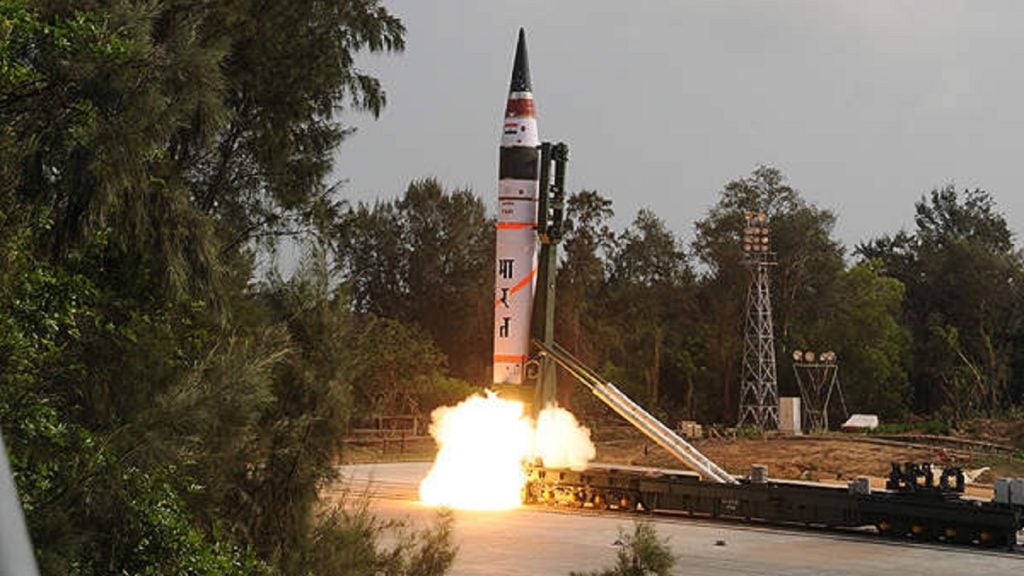The flight test by India’s Defence Research and Development Organisation (DRDO) of the country’s Agni-5 ship-launched ballistic missile (SLBM), fitted with multiple independently targetable re-entry vehicle (MIRV) technology, could ignite a regional nuclear arms race, analysts state.
Announcing the first flight of a MIRV-equipped Agni-5 SLBM on 11 March, Indian authorities hailed the technological milestone, with India joining the US, UK, France, Russia, and China as countries able to launch MIRV-equipped ballistic missiles. When fitted with MIRVs, a ballistic missile’s potential destructive capacity is enhanced significantly, with each independent re-entry able to be equipped with a nuclear warhead.
Alternatively, non-nuclear-tipped MIRVs could act as decoys in an attempt to confuse or saturate enemy air defences, enabling MIRVs with nuclear warheads to reach their targets.
According to some estimates, the Agni-5 ballistic missile has a range of over 5,000km and potentially beyond 7,000km.
Tushar Mangure, defence analyst at GlobalData, said that, following the Agni-5 test, the next steps will see India likely deploying MIRV technology in its K-5 and K-6 SLBMs onboard the Arihant-class and the upcoming S5-class ballistic missile submarines (SSBNs) of the Indian Navy, which will enhance the country’s sea-based deterrence.
“This is particularly relevant for India, as it is trying to counter potential aggression from a stronger regional rival, China,” Mangure said.
Development could drive regional arms race
According to GlobalData’s Global Missiles & Missile Defense Systems Market Forecast 2023-2033 report, the global cumulative spending on strategic land-attack missiles is estimated to be about $71.2bn between 2023 and 2033, growing at a compound annual growth rate of 6.5%.
India is expected to account for 15% of this expenditure owing to the aggressive modernisation of ballistic missile inventory and the induction of new SSBNs in its fleet.
“With four Arihant-class and three S5-class SSBNs, India is anticipated to deploy around 60 to 72 SLBMs with MIRVs by the next decade. The Agni Prime, Agni-4, Agni-5, and Agni-6 missiles will constitute most of the land-based strategic missile arsenal.
“These next-gen missiles feature enhanced guidance systems, better propellants, lightweight materials, and canisterization for faster deployment. They are anticipated to replace the in-service ballistic missiles, including the Prithvi, Agni-1, and Agni-2,” Mangure stated.
However, Mangure said that India's development of such a capability could increase regional tensions as neighbouring countries seek to match or exceed New Delhi's technological progress.
“The deployment of missiles like Agni-5 will certainly improve India’s deterrence but may also lead to a regional nuclear arms race, putting over three billion people under the threat of potential nuclear fallout.”












